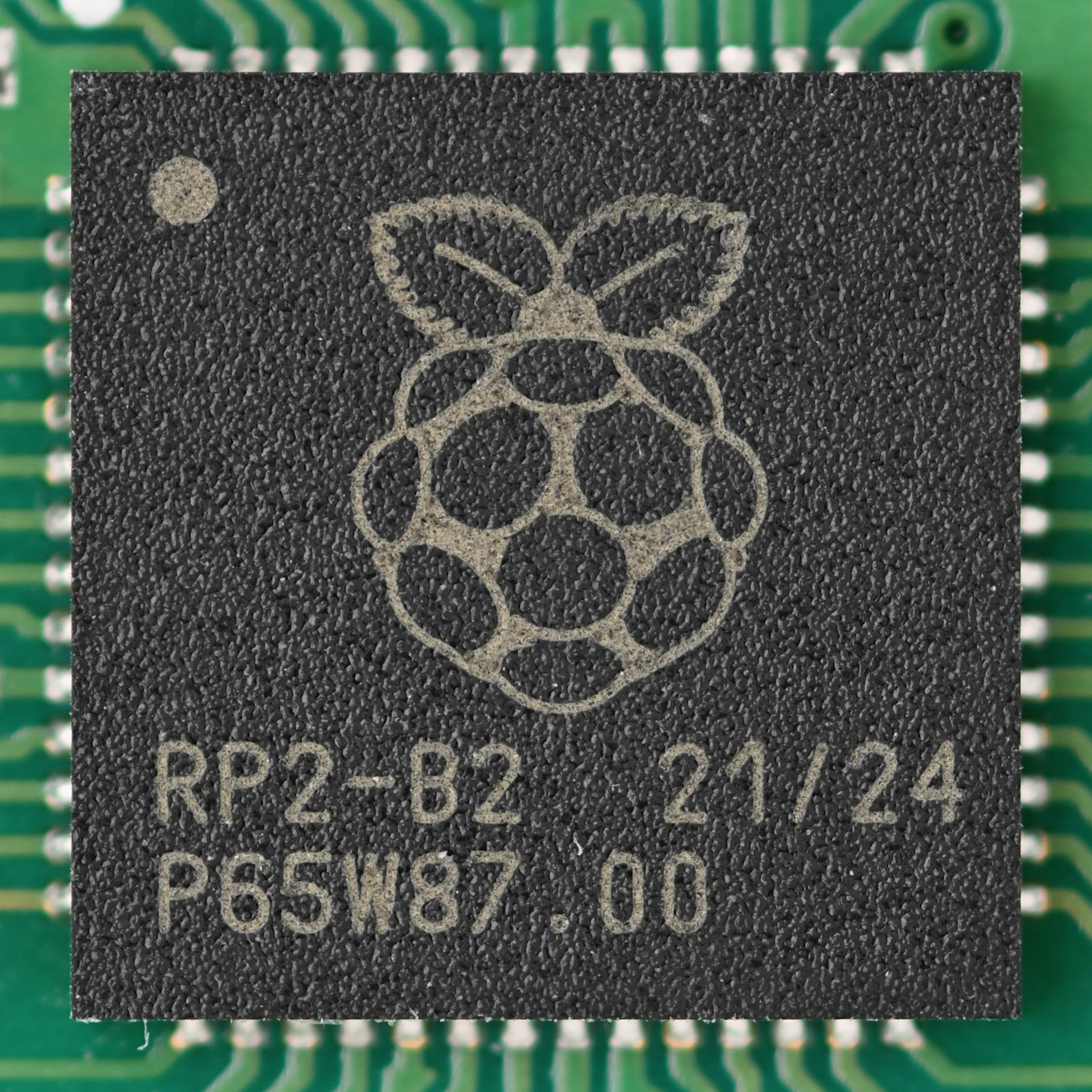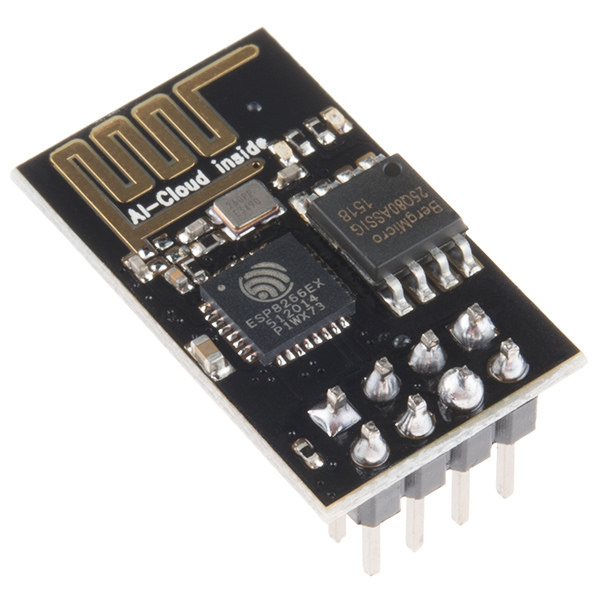|
MicroPython
MicroPython is a software implementation of a programming language largely compatible with Python 3, written in C, that is optimized to run on a microcontroller. MicroPython consists of a Python compiler to bytecode and a runtime interpreter of that bytecode. The user is presented with an interactive prompt (the REPL) to execute supported commands immediately. Included are a selection of core Python libraries; MicroPython includes modules which give the programmer access to low-level hardware. MicroPython does have an inline assembler, which lets the code run at full speed, but it is not portable across different microcontrollers. The source code for the project is available on GitHub under the MIT License. History MicroPython was originally created by the Australian programmer Damien George, after a successful Kickstarter-backed campaign in 2013. The original Kickstarter campaign released MicroPython with an STM32F4-powered development board "pyboard". In the meantime ... [...More Info...] [...Related Items...] OR: [Wikipedia] [Google] [Baidu] [Amazon] |
CircuitPython
CircuitPython is an open-source derivative of the MicroPython programming language targeted toward students and beginners. Development of CircuitPython is supported by Adafruit Industries. It is a software implementation of the programming language, written in C (programming language), C. It has been ported to run on several modern microcontrollers. CircuitPython consists of a Python compiler to bytecode and a runtime interpreter of that bytecode that runs on the microcontroller hardware. The user is presented with an interactive prompt (the read–eval–print loop, REPL) to execute supported commands immediately. Included are a selection of core Python libraries. CircuitPython includes modules which give the programmer access to the low-level hardware of supported products as well as higher-level libraries for beginners. CircuitPython is a fork of MicroPython, originally created by Damien George. The MicroPython community continues to discuss forks of MicroPython into variants ... [...More Info...] [...Related Items...] OR: [Wikipedia] [Google] [Baidu] [Amazon] |
Micro Bit
The Micro Bit (also referred to as BBC Micro Bit or stylized as micro:bit) is an open source hardware ARM-based embedded system designed by the BBC for use in computer education in the United Kingdom. It was first announced on the launch of BBC's Make It Digital campaign on 12 March 2015 with the intent of delivering 1 million devices to pupils in the UK. The final device design and features were unveiled on 6 July 2015 whereas actual delivery of devices, initially planned for September 2015 to schools and October 2015 to general public, began on 10 February 2016. The device is described as half the size of a credit card and has an ARM Cortex-M0 processor, accelerometer and magnetometer sensors, Bluetooth and USB connectivity, a display consisting of 25 LEDs, two programmable buttons, and can be powered by either USB or an external battery pack. The device inputs and outputs are through five ring connectors that form part of a larger 25-pin edge connector. In October 2020, a ... [...More Info...] [...Related Items...] OR: [Wikipedia] [Google] [Baidu] [Amazon] |
Python (programming Language)
Python is a high-level programming language, high-level, general-purpose programming language. Its design philosophy emphasizes code readability with the use of significant indentation. Python is type system#DYNAMIC, dynamically type-checked and garbage collection (computer science), garbage-collected. It supports multiple programming paradigms, including structured programming, structured (particularly procedural programming, procedural), object-oriented and functional programming. It is often described as a "batteries included" language due to its comprehensive standard library. Guido van Rossum began working on Python in the late 1980s as a successor to the ABC (programming language), ABC programming language, and he first released it in 1991 as Python 0.9.0. Python 2.0 was released in 2000. Python 3.0, released in 2008, was a major revision not completely backward-compatible with earlier versions. Python 2.7.18, released in 2020, was the last release of ... [...More Info...] [...Related Items...] OR: [Wikipedia] [Google] [Baidu] [Amazon] |
RP2040
RP2040 is a 32-bit computing, 32-bit multi-core processor, dual-core ARM Cortex-M0+ microcontroller designed by Raspberry Pi Foundation, Raspberry Pi Ltd. In January 2021, it was released as part of the Raspberry Pi#Raspberry Pi Pico, Raspberry Pi Pico board. Its successor is the RP2350 series. Overview Announced on 21 January 2021, the RP2040 is the first microcontroller designed by Raspberry Pi Ltd. The microcontroller is low cost, with the Raspberry Pi Pico being introduced at and the RP2040 itself costing . The microcontroller can be programmed in assembly language, assembly, C (programming language), C, C++, Swift (programming language), Swift, Free Pascal, Rust (programming language), Rust, Go (programming language), Go, MicroPython, CircuitPython, Ada (programming language), Ada, TypeScript and Zig (programming language), Zig. It is powerful enough to run TensorFlow Lite. At announcement time, four other manufacturers (Adafruit, Pimoroni, Arduino, SparkFun) were at advan ... [...More Info...] [...Related Items...] OR: [Wikipedia] [Google] [Baidu] [Amazon] |
ESP8266
The ESP8266 is a low-cost Wi-Fi microcontroller, with built-in TCP/IP stack, TCP/IP networking software, and microcontroller capability, produced by Espressif Systems in Shanghai, China. The chip was popularized in the English-speaking maker culture, maker community in August 2014 via the ESP-01 module, made by a third-party manufacturer Ai-Thinker. This small module allows microcontrollers to connect to a Wi-Fi network and make simple TCP/IP connections using Hayes command set, Hayes-style commands. However, at first, there was almost no English-language documentation on the chip and the commands it accepted. The very low price and the fact that there were very few external components on the module, which suggested that it could eventually be very inexpensive in volume, attracted many hackers to explore the module, the chip, and the software on it, as well as to translate the Chinese documentation. The ESP8285 is a similar chip with a built-in 1 MiB flash memory, allowing ... [...More Info...] [...Related Items...] OR: [Wikipedia] [Google] [Baidu] [Amazon] |
ESP32
ESP32 is a family of low-cost, energy-efficient microcontrollers that integrate both Wi-Fi and Bluetooth capabilities. These chips feature a variety of processing options, including the Tensilica Xtensa LX6 microprocessor available in both dual-core and single-core variants, the Xtensa LX7 dual-core processor, or a single-core RISC-V microprocessor. In addition, the ESP32 incorporates components essential for wireless data communication such as built-in antenna switches, an RF balun, power amplifiers, low-noise receivers, filters, and power-management modules. Typically, the ESP32 is embedded on device-specific printed circuit boards or offered as part of development kits that include a variety of GPIO pins and connectors, with configurations varying by model and manufacturer. The ESP32 was designed by Espressif Systems and is manufactured by TSMC using their 40 nm process. It is a successor to the ESP8266 microcontroller. Features Features of the ESP32 include the foll ... [...More Info...] [...Related Items...] OR: [Wikipedia] [Google] [Baidu] [Amazon] |
Microcontroller
A microcontroller (MC, uC, or μC) or microcontroller unit (MCU) is a small computer on a single integrated circuit. A microcontroller contains one or more CPUs (processor cores) along with memory and programmable input/output peripherals. Program memory in the form of NOR flash, OTP ROM, or ferroelectric RAM is also often included on the chip, as well as a small amount of RAM. Microcontrollers are designed for embedded applications, in contrast to the microprocessors used in personal computers or other general-purpose applications consisting of various discrete chips. In modern terminology, a microcontroller is similar to, but less sophisticated than, a system on a chip (SoC). A SoC may include a microcontroller as one of its components but usually integrates it with advanced peripherals like a graphics processing unit (GPU), a Wi-Fi module, or one or more coprocessors. Microcontrollers are used in automatically controlled products and devices, such as automobile engi ... [...More Info...] [...Related Items...] OR: [Wikipedia] [Google] [Baidu] [Amazon] |
Lego Mindstorms EV3
LEGO Mindstorms EV3 (stylized: LEGO MINDSTORMS EV3) is the third and final generation of LEGO's Mindstorms robotics kit line. It is the successor to the second generation LEGO Mindstorms NXT kit. The "EV" designation refers to the "evolution" of the Mindstorms product line. "3" refers to the fact that it is the third generation of computer modules - first was the RCX and the second is the NXT. It was officially announced on January 4, 2013, and was released in stores on September 1, 2013. The education edition was released on August 1, 2013. There are many competitions using this set, including the FIRST LEGO League Challenge and the World Robot Olympiad, sponsored by LEGO. After an announcement in October 2022, The Lego Group officially discontinued ''Lego Mindstorms'' at the end of 2022. Overview The biggest change from the LEGO Mindstorms NXT and NXT 2.0 to the EV3 is the technological advances in the programmable brick. The main processor of the NXT was an ARM7 microc ... [...More Info...] [...Related Items...] OR: [Wikipedia] [Google] [Baidu] [Amazon] |
Kickstarter
Kickstarter, PBC is an American Benefit corporation, public benefit corporation based in Brooklyn, New York City, that maintains a global crowdfunding platform focused on creativity. The company's stated mission is to "help bring creative projects to life". As of April 2025, Kickstarter has received US$8.71 billion in pledges from 24.1 million backers to fund 277,302 projects, such as films, music, stage shows, comics, journalism, video games, board games, technology, publishing, and food-related projects. People who back Kickstarter projects are offered tangible rewards or experiences in exchange for their pledges. This model traces its roots to subscription model of arts patronage, in which artists would go directly to their audiences to fund their work. History Kickstarter launched on April 28, 2009, by Perry Chen, Yancey Strickler, and Charles Adler. ''The New York Times'' called Kickstarter "the people's National Endowment for the Arts, NEA". ''Time (magazine), Time'' named ... [...More Info...] [...Related Items...] OR: [Wikipedia] [Google] [Baidu] [Amazon] |
ARM Architecture
ARM (stylised in lowercase as arm, formerly an acronym for Advanced RISC Machines and originally Acorn RISC Machine) is a family of reduced instruction set computer, RISC instruction set architectures (ISAs) for central processing unit, computer processors. Arm Holdings develops the ISAs and licenses them to other companies, who build the physical devices that use the instruction set. It also designs and licenses semiconductor intellectual property core, cores that implement these ISAs. Due to their low costs, low power consumption, and low heat generation, ARM processors are useful for light, portable, battery-powered devices, including smartphones, laptops, and tablet computers, as well as embedded systems. However, ARM processors are also used for desktop computer, desktops and server (computing), servers, including Fugaku (supercomputer), Fugaku, the world's fastest supercomputer from 2020 to 2022. With over 230 billion ARM chips produced, , ARM is the most widely used ... [...More Info...] [...Related Items...] OR: [Wikipedia] [Google] [Baidu] [Amazon] |
Python Software Foundation
The Python Software Foundation (PSF) is an American nonprofit organization devoted to the Python programming language, launched on March 6, 2001. The mission of the foundation is to foster development of the Python community and is responsible for various processes within the Python community, including developing the core Python distribution, managing intellectual rights, developer conferences including the Python Conference (PyCon), and raising funds. In 2005, the Python Software Foundation received the ''Computerworld'' Horizon Award for "cutting-edge" technology. Overview The PSF focuses on empowering and supporting people within the Python community with grant programs that support sprints, conferences, meetups, user groups, and Python development. The PSF runs Python Conference (PyCon) US, the leading Python community conference. The PSF is the primary point of contact for organizations that wish to work with Python, to support Python, or sponsor Python development. ... [...More Info...] [...Related Items...] OR: [Wikipedia] [Google] [Baidu] [Amazon] |








